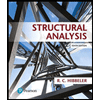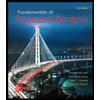5.42 (See Fluids in the News article titled "Bow thrusters," Section 5.2.2.) The bow thruster on the boat shown in Fig. P5.42 is used to turn the boat. The thruster produces a 1-m-diameter jet of water with a velocity of 10 m/s. Determine the force pro- duced by the thruster. Assume that the inlet and outlet pressures are zero and that the momentum of the water entering the thruster is negligible. V= 10 m/s #
5.42 (See Fluids in the News article titled "Bow thrusters," Section 5.2.2.) The bow thruster on the boat shown in Fig. P5.42 is used to turn the boat. The thruster produces a 1-m-diameter jet of water with a velocity of 10 m/s. Determine the force pro- duced by the thruster. Assume that the inlet and outlet pressures are zero and that the momentum of the water entering the thruster is negligible. V= 10 m/s #
Chapter2: Loads On Structures
Section: Chapter Questions
Problem 1P
Related questions
Question
Solve and explain so that it is easy to undertsand

Transcribed Image Text:**Exercise 5.42: Bow Thruster Application in Marine Engineering**
In this exercise, we explore an application of bow thrusters, a key innovation in marine engineering. Refer to the "Fluids in the News" article on Bow Thrusters (Section 5.2.2) for more background information.
**Scenario:**
The bow thruster on the boat in Figure P5.42 is designed to aid in maneuvering. The device operates by generating a 1-meter diameter jet of water with a velocity of 10 meters per second. Your task is to determine the force exerted by the thruster.
**Assumptions:**
- The inlet and outlet pressures are considered to be zero.
- The momentum of water entering the thruster can be disregarded.
**Diagram Explanation:**
- The diagram depicts a top-down view of a boat equipped with a bow thruster located near the front section.
- Water is expelled perpendicularly from the side at a velocity of 10 m/s and a diameter of 1 meter.
- The force impacts the direction and speed of the boat's turn.
Calculate the force by considering the momentum change of the water jet based on the given parameters, neglecting any potential energy losses or inefficiencies in the system.
Expert Solution
This question has been solved!
Explore an expertly crafted, step-by-step solution for a thorough understanding of key concepts.
This is a popular solution!
Trending now
This is a popular solution!
Step by step
Solved in 2 steps

Knowledge Booster
Learn more about
Need a deep-dive on the concept behind this application? Look no further. Learn more about this topic, civil-engineering and related others by exploring similar questions and additional content below.Recommended textbooks for you


Structural Analysis (10th Edition)
Civil Engineering
ISBN:
9780134610672
Author:
Russell C. Hibbeler
Publisher:
PEARSON

Principles of Foundation Engineering (MindTap Cou…
Civil Engineering
ISBN:
9781337705028
Author:
Braja M. Das, Nagaratnam Sivakugan
Publisher:
Cengage Learning


Structural Analysis (10th Edition)
Civil Engineering
ISBN:
9780134610672
Author:
Russell C. Hibbeler
Publisher:
PEARSON

Principles of Foundation Engineering (MindTap Cou…
Civil Engineering
ISBN:
9781337705028
Author:
Braja M. Das, Nagaratnam Sivakugan
Publisher:
Cengage Learning

Fundamentals of Structural Analysis
Civil Engineering
ISBN:
9780073398006
Author:
Kenneth M. Leet Emeritus, Chia-Ming Uang, Joel Lanning
Publisher:
McGraw-Hill Education


Traffic and Highway Engineering
Civil Engineering
ISBN:
9781305156241
Author:
Garber, Nicholas J.
Publisher:
Cengage Learning